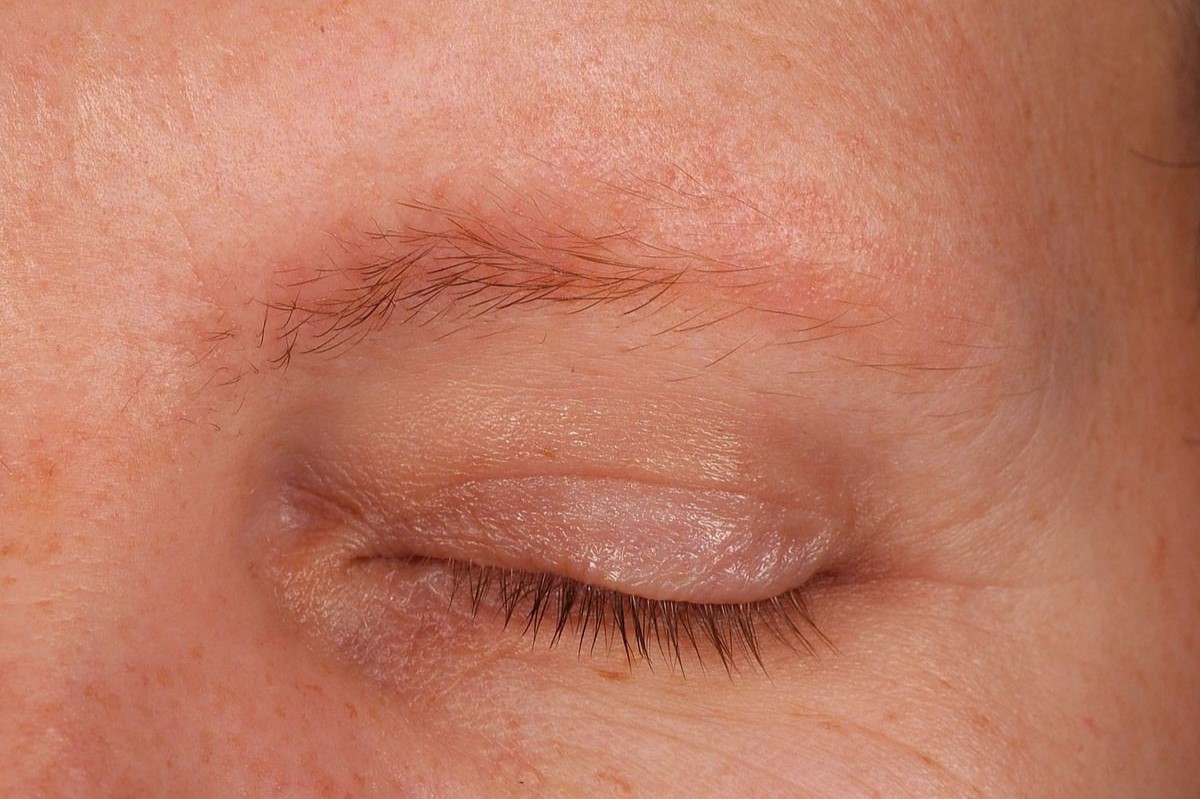
Ulerythema ophryogenesis might sound like a mouthful, but it's a rare skin condition that affects hair follicles, especially around the eyebrows. Characterized by redness, scaling, and hair loss, this condition often begins in childhood and can persist into adulthood. While it’s not life-threatening, it can be quite distressing for those who have it. Understanding more about this condition can help in managing its symptoms and improving quality of life. In this post, we’ll share 30 intriguing facts about ulerythema ophryogenesis, from its causes and symptoms to treatment options and daily care tips. Ready to learn more? Let’s dive in!
Key Takeaways:
- Ulerythema Ophryogenesis is a rare skin condition that causes redness, scaling, and hair loss around the eyebrows. It often runs in families and has no cure, but treatments can help manage symptoms.
- Recognizing symptoms, managing triggers, and seeking support can improve the quality of life for those living with Ulerythema Ophryogenesis. Ongoing research aims to better understand the condition and develop more effective treatments.
What is Ulerythema Ophryogenesis?
Ulerythema Ophryogenesis is a rare skin condition that primarily affects hair follicles, especially around the eyebrows. This disorder can cause redness, scaling, and hair loss in the affected areas. Understanding this condition can help manage its symptoms better.
-
Rare Condition: Ulerythema Ophryogenesis is an uncommon skin disorder, making it less known even among dermatologists.
-
Genetic Link: This condition often has a genetic component, meaning it can run in families.
-
Hair Follicle Impact: It primarily affects hair follicles, leading to hair loss, particularly around the eyebrows.
-
Redness and Scaling: The skin around the affected follicles often becomes red and scaly.
-
Early Onset: Symptoms usually appear in childhood or adolescence.
-
No Cure: There is currently no cure, but treatments can help manage symptoms.
Symptoms of Ulerythema Ophryogenesis
Recognizing the symptoms of Ulerythema Ophryogenesis can lead to earlier diagnosis and better management. Here are some common signs to look out for.
-
Eyebrow Hair Loss: One of the most noticeable symptoms is the loss of eyebrow hair.
-
Red Bumps: Small, red bumps may appear around the hair follicles.
-
Skin Thickening: The skin in the affected area can become thickened over time.
-
Itching: Some individuals experience itching in the affected areas.
-
Scarring: In severe cases, scarring can occur, leading to permanent hair loss.
Causes and Risk Factors
Understanding what causes Ulerythema Ophryogenesis and the risk factors involved can help in managing the condition better.
-
Genetic Predisposition: A family history of the condition increases the risk.
-
Autoimmune Disorders: Some autoimmune disorders are linked to a higher risk of developing this condition.
-
Environmental Factors: Certain environmental factors may trigger or worsen symptoms.
-
Hormonal Changes: Hormonal changes during puberty can exacerbate symptoms.
-
Skin Trauma: Trauma to the skin, such as excessive plucking of eyebrows, can trigger symptoms.
Diagnosis and Treatment
Diagnosing Ulerythema Ophryogenesis involves a combination of clinical examination and medical history. Treatment focuses on managing symptoms.
-
Clinical Examination: Dermatologists often diagnose the condition through a physical examination of the affected area.
-
Biopsy: In some cases, a skin biopsy may be performed to confirm the diagnosis.
-
Topical Steroids: Topical steroids can help reduce inflammation and redness.
-
Moisturizers: Regular use of moisturizers can help manage scaling and dryness.
-
Avoiding Triggers: Identifying and avoiding triggers can help manage symptoms.
Living with Ulerythema Ophryogenesis
Living with Ulerythema Ophryogenesis can be challenging, but understanding how to manage the condition can improve quality of life.
-
Regular Dermatologist Visits: Regular check-ups with a dermatologist can help manage the condition effectively.
-
Support Groups: Joining support groups can provide emotional support and practical advice.
-
Healthy Diet: A healthy diet can improve overall skin health.
-
Stress Management: Managing stress can help reduce flare-ups.
-
Sun Protection: Protecting the skin from the sun can prevent worsening of symptoms.
Research and Future Directions
Ongoing research aims to better understand Ulerythema Ophryogenesis and develop more effective treatments.
-
Genetic Research: Researchers are studying the genetic factors involved in the condition.
-
New Treatments: New treatments are being developed to manage symptoms more effectively.
-
Patient Registries: Patient registries help researchers collect data and improve understanding of the condition.
-
Clinical Trials: Participating in clinical trials can provide access to new treatments and contribute to research efforts.
Final Thoughts on Ulerythema Ophryogenesis
Ulerythema Ophryogenesis, a rare skin condition, often flies under the radar. Understanding its symptoms, causes, and treatments can make a world of difference for those affected. This condition primarily impacts hair follicles, leading to redness, bumps, and potential scarring. Genetic factors play a significant role, and while there's no cure, treatments like topical retinoids and laser therapy can help manage symptoms.
Early diagnosis and intervention are crucial. If you notice persistent redness or bumps around your eyebrows, consulting a dermatologist is a smart move. Staying informed and proactive can improve quality of life for those dealing with this condition.
Knowledge is power. By spreading awareness about Ulerythema Ophryogenesis, we can support those affected and encourage further research. Let's continue to learn and share information, making a positive impact on the lives of many.
Frequently Asked Questions
Was this page helpful?
Our commitment to delivering trustworthy and engaging content is at the heart of what we do. Each fact on our site is contributed by real users like you, bringing a wealth of diverse insights and information. To ensure the highest standards of accuracy and reliability, our dedicated editors meticulously review each submission. This process guarantees that the facts we share are not only fascinating but also credible. Trust in our commitment to quality and authenticity as you explore and learn with us.
